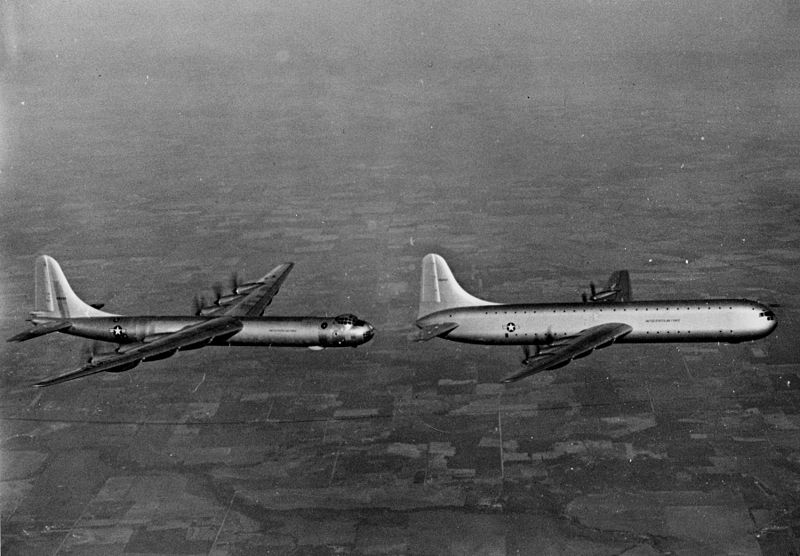Bomber aircraft with the largest carrying capacity and longest range are categorised as heavy bombers. Usually they are among the largest size aircraft in military service.
Their mission is to drop the largest possible amount of bombs over the most distance, and strike enemy targets in the most efficient manner.
The larger planes were first developed in World War I, but were not commonly used until the Second World War when modern aircraft design enabled four-engine bombers to strike industrial targets in Germany and Japan.
In the 1940s, mass-production of aircraft enabled better methods of strategic bombing to be employed.
Developments during the war permitted smaller, classic fighter aircraft to carry inflated 2,000-pound bomb loads, and fighter-bombers were assuming the strategic bombing roles. In August 1945, U.S. B-29 heavy bombers dropped atomic bombs onto the cities of Hiroshima and Nagasaki, Japan causing untold destruction.
The advent of nuclear weaponry eternally changed the characteristics of warfare and military stratagem.
After the 1950s intercontinental ballistic armaments and ballistic missile submarines began to replace heavy bomber aircraft in the tactical nuclear role.
Some of the largest warbirds used at the time include:
The Tupolev Tu-95 – A four-engine turboprop-powered strategic bomber and missile carrier.
Initially used by the Soviet Union in 1956, it is anticipated to be used by the Russian Air Force until 2040 and possibly beyond. A different version of the bomber for nautical patrols is designated Tu-142, while a passenger airliner offshoot was entitled Tu-114.
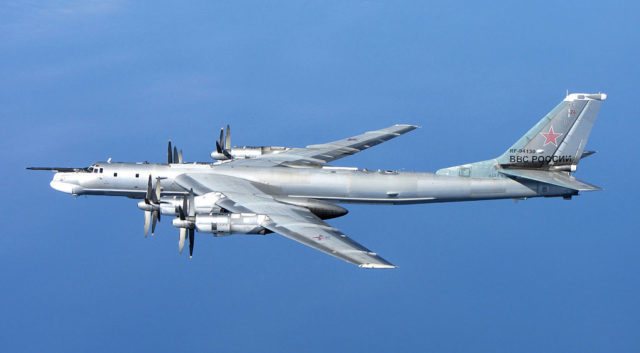
The Tu-95 has four Kuznetsov NK-12 engines, each powering contra-rotating props. It is the only propeller-powered strategic bomber currently in operation. The tips of the propeller-blades move faster than the speed of sound and the unique wings slant back at a 35° angle.
The Tu-95 is one of the few mass-produced propeller powered aircraft with wings designed in this fashion.
The same 35° angle was popular enough that the design was repeated for use on the Boeing 707 and DC8 airplanes.
The Convair XC-99- Built by Convair for the United States Air Force in 1947, it was the largest piston-engine conveyance aircraft created from the Convair B-36 bomber, imitating the Convair’s wing and other structure designs. The first flight was on 24 November in San Diego, California and after successful analysis, it was delivered to the Air Force on 26 May 1949.
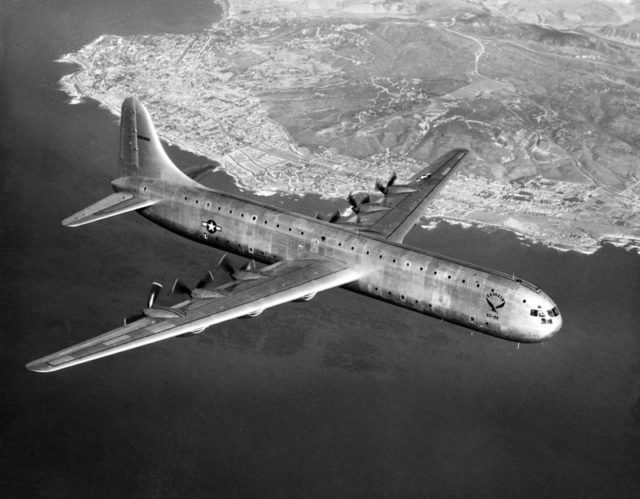
The Convair Model 37 was a passenger model based on the XC-99 but was never completed. In July 1950, the XC-99 flew its first mission conveying over one hundred thousand pounds of aircraft engines and parts from San Diego to Kelly Air Force Base in San Antonio, Texas.
The aircraft later broke an aviation record by raising 104,000 lbs. at an elevation of 5,000 ft.
In August 1953, the XC-99 fascinated the public when it made a 12,000-mile flight to Rhein-Main Air Base in Germany by way of Kindley Air Force Base, Bermuda and Lajes Field in the Azores loaded with more than 60,000 pounds round trip.
The Petlyakov Pe-8 – Another Soviet heavy bomber built during the war was used to bomb Berlin in August of 1941. It was also used to raise the spirit of the Soviet people by exposing enemy weaknesses. The principal use of the aircraft was to attack Nazi munition facilities after dark although one transported the Soviet Foreign Minister, Vyacheslav Molotov, from Russia to the United States in 1942.
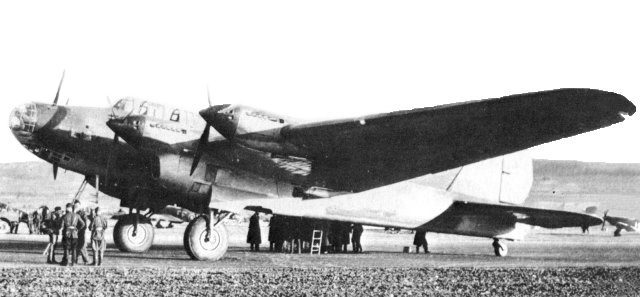
After its primary designer, Vladimir Petlyakov, perished in a plane crash in 1942 the aircraft, formerly labeled the TB-7, was renamed the Pe-8. Problems obtaining supplies hindered production and additionally, the Pe-8 suffered from engine glitches.
The loss rate of these planes, from mechanical failure, or combat, increased twofold between 1942 and 1944 due to the fact that they were also popular targets for Hitler’s Luftwaffe.
The Boeing B-52 Stratofortress – Designed built and maintained by Boeing, this plane is a long-range, subsonic, jet-powered strategic bomber. Still in operation by the United States Air Force since the 1950s, the bomber is capable of carrying up to 70,000 pounds of ordnance, and has a combat range of more than 8,800 miles without refueling.
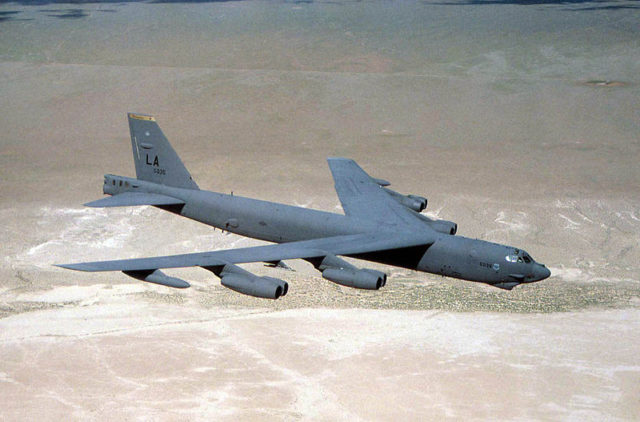
With the establishment of a successful contract in June 1946, the B-52 design grew from a straight wing aircraft power driven by six turboprop engines to the ultimate YB-52 with eight turbojet engines and angled wings.
The B-52 was initially launched in April of 1952. Constructed to carry nuclear weapons for Cold War-era pre-emptive operations, the B-52 Stratofortress replaced the Convair B-36.
The Tupolev TB-3– A heavy bomber aircraft which was originally used by the Soviet Air Force in the 1930s was returned to service during World War II.
The world’s first cantilever wing, the four-engine heavy bomber was deemed outmoded and was removed from service in 1939. During the war, the TB-3 was used as a bomber and transport for military tanks. By the end of the war, most of the surviving aircraft had been retired.
After the war, some were modified as transports for important officials, and a few others were used in various Soviet testing programs. The few remaining planes supported Soviet Arctic operations until the late 1950s.
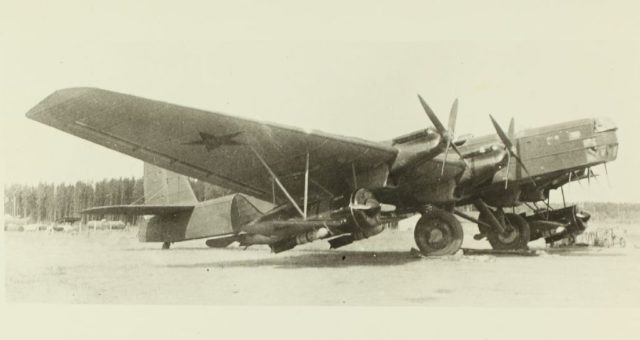
The Convair B-36 “Peacemaker” A United States Air Force strategic bomber built by Convair operated from 1949 to 1959.
The 230 ft. wingspan, the longest of any combat aircraft, made the B-36 the largest plane ever built and the first bomber capable of delivering any weapon in the U.S. arsenal from inside its four bomb bays.
With a range of 10,000 mi (16,000 km) and a maximum payload of 87,200 lb, the B-36 was the world’s first bomber with the ability to fly from one continent to another without the need to refuel.
The B-36 was the Strategic Air Command’s (SAC) first aircraft to convey nuclear weapons until replaced by the more modern jet-powered Boeing B-52 Stratofortress.
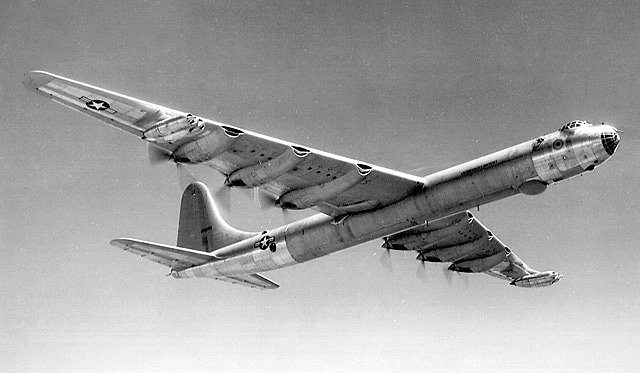
The Messerschmitt Me 323 Gigant- A German military transport aircraft of World War II and a variant of the Me 321 military glider. It was the largest land-based transport aircraft used in the war. Over 200 were made, and a few were converted from the Me 321.
In 1940, Operation Sea Lion about to be launched by Germany required a glider in order to invade England. The DFS 230 light glider tested successfully during the Battle of Fort Eben-Emael in Belgium and was scheduled for use in the invasion of Crete in 1941.

No list of large aircraft can be complete without The Spruce Goose. The Hughes H-4 Hercules is a model strategic airlift flying nautical ship designed by publishing magnate, Howard Hughes and built by the Hughes Aircraft Company.
Hughes imagined a transatlantic flight transport for use during World War II, but it was still unfinished at the end of the war.Hughes made a single flight on November 2, 1947, but the design was never adopted for use in the military.

Due to wartime restrictions on the use of aluminum and other metals, Hughes’ ship was built from wood earning it the nickname the “Spruce Goose”, although it was made almost entirely of birch.
The Hercules boasts the largest wingspan of any aircraft in history. It can be seen at the Evergreen Aviation & Space Museum in McMinnville, Oregon.
